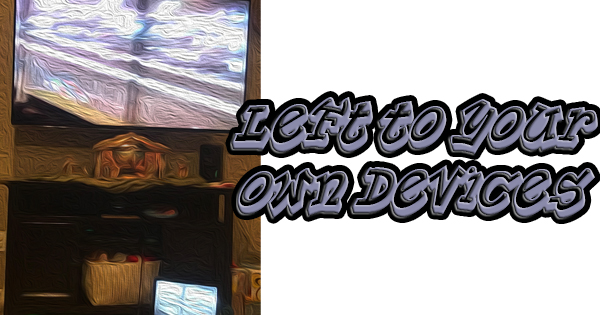
I’ve made a living in the technology game for thirteen years now. That’s really hard for me to believe, because thirteen years seems like a long time for someone as young and handsome as myself. While both of those adjectives are definitely debatable, when you spend so long doing something, you take things for granted and think “everyone knows that”. The fact is, no, they don’t. A good example of this is hooking a laptop to an HDTV. As more live video content becomes available only on a computer, you aren’t as limited as you think you are. Today I’ll show you how you can watch what’s on your computer screen on your television instead.
In my house, we have two Smart TVs and a Smart DVD player. All three devices are wirelessly connected to our Internet, and provide us the opportunity to enjoy services like Netflix, Amazon Prime, Pandora, etc., etc., etc. While there are many apps available for these services, they don’t cover everything you’d like to see. For example, we subscribe to DirecTV. Recently, we had issues with our dish and the main coaxial cable running into the house. This left us with no television at all for two days. Some of us went into shock, but somehow, we survived. DirecTV has an app for mobile devices, but not our TVs. I got around that by running an HDMI cable from my computer to the television. Problem solved. Here’s another example: I subscribe to a racing website that live streams races throughout the season. There is no app for this site, and the video doesn’t display probably when using the web browser that’s part of the Samsung Smart Hub. So, I unplug my PlayStation3 (yes, it’s old), take the HDMI cable from that, plug it into my laptop, and enjoy a night at the races in sixty five inches of high definition glory.
To make this a reality in your home, you need to do two things: 1) Connect your laptop/tablet/phone to your television, and 2) Select the proper input on your HDTV. If your mobile device has an HDMI port on it, simply plug one end of an HDMI cable into your device, and the other end into your television. If it doesn’t, you’re not dead in the water. P.C.s always have a video output port. They might be DisplayPort, DVI, or VGA, but you’ll find one. After determining the port that your computer has, you have two options: 1) purchase an adapter that works with whatever your computer has on one end, and an HDMI port on the other, or 2) get a single cable that has one end to match your computer’s port, and the other an HDMI. For you Apple fans, you can connect your device by obtaining a Lightning Port to HDMI adapter, and then running an HDMI cable between the adapter and the HDTV. You can get any length HDMI cable you may need, by the way.
To complete the connection, locate a vacant HDMI port on your television. The fewest number of ports I’ve encountered on a modern HDTV is two, while most have four. If you have a vacant port, plug your HDMI cable into it and make note of the number. If you don’t, leave the HDMI cable plugged into the television, and temporarily unplug it from the back of your cable box or other connected device, and plug that end into your computer. Turn on your newly connected computer or other mobile device, and turn on the television (if it isn’t already). Now, grab your TV remote and press “Input” or “Source” to select the HDMI number that you made a note of earlier. Cycling through inputs until what you see on the TV matches what’s on the computer works perfectly fine. Here’s the final step: navigate to what you’d like to watch on your mobile device, put your feet up, relax, and enjoy!
If I’ve learned one thing in these thirteen years, it’s that there’s always another way to do something in the technology realm. There’s (almost) always hope. If you don’t have a Smart TV, don’t worry about it. Your mobile device is smart enough!
